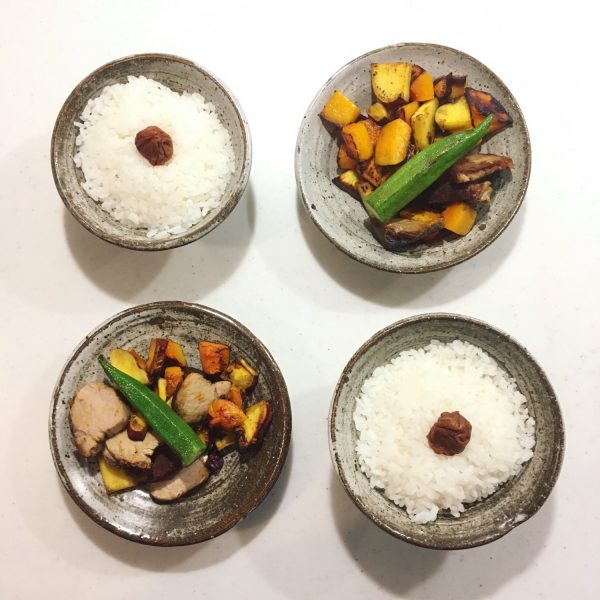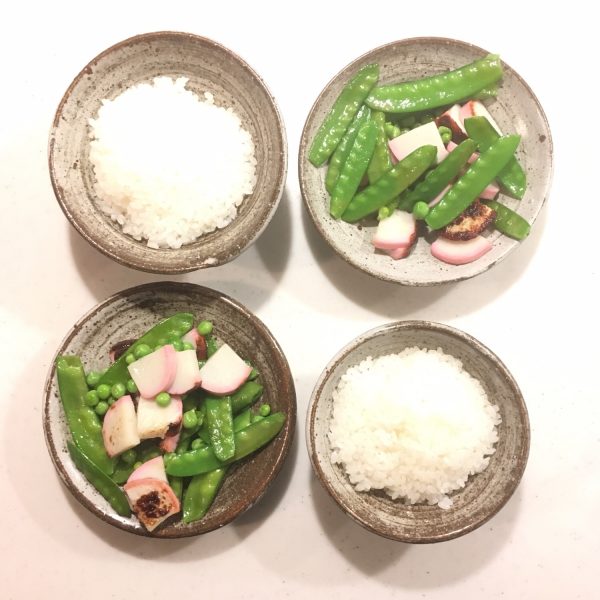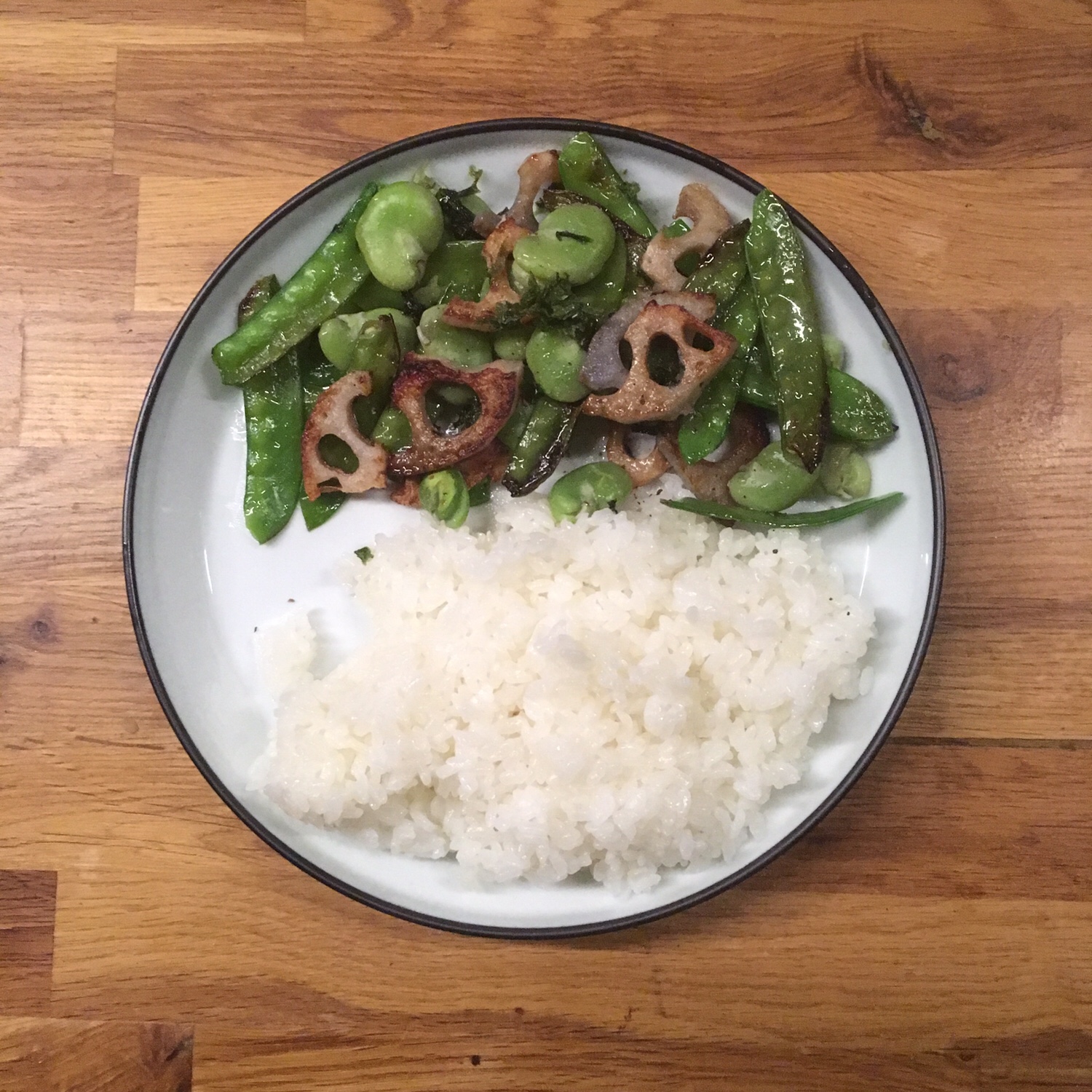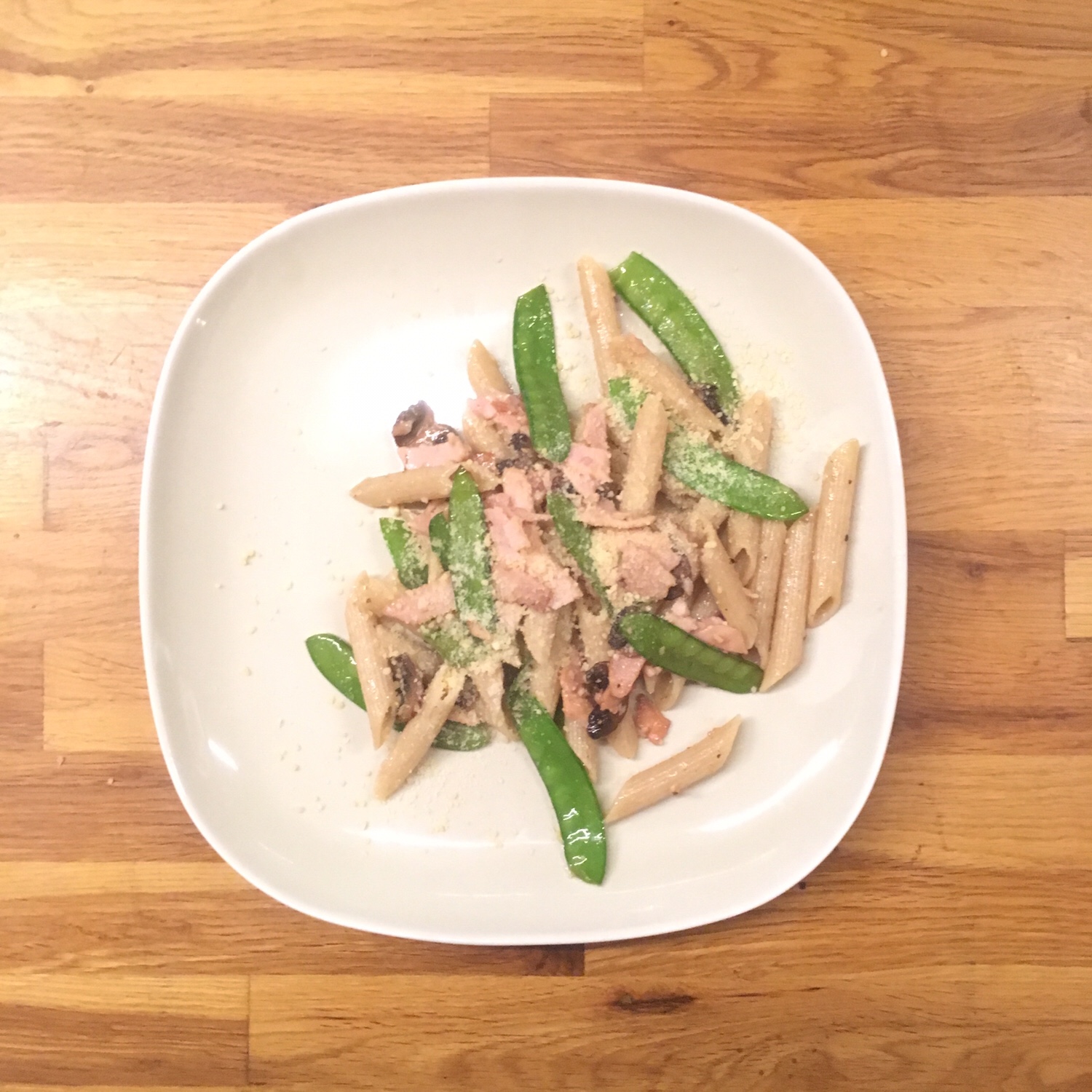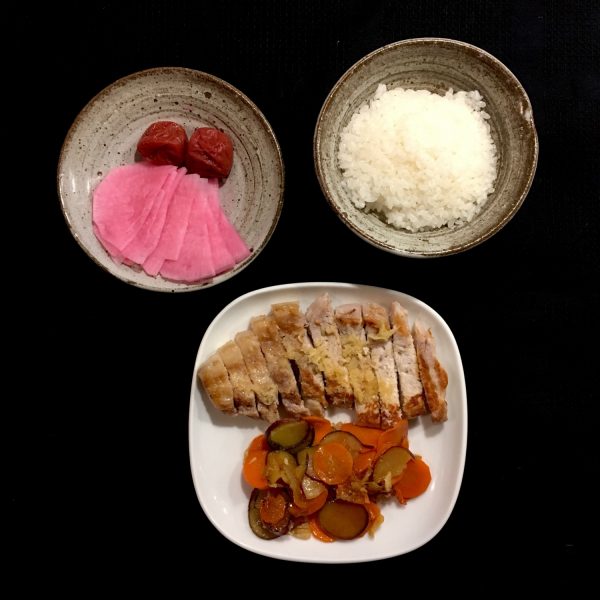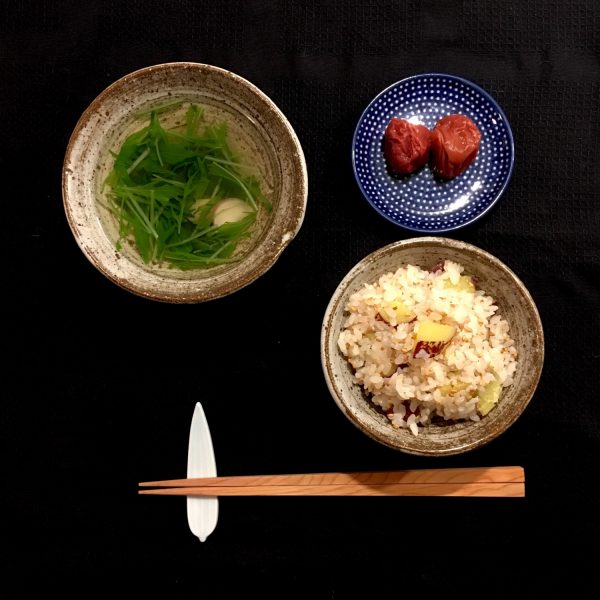Recently it’s been pretty busy both at work and at home. A new job for A. some new challenges and experiments for me, our days in Tokyo pass through without noticing. And when in the countryside it’s very much the same… when we are not working we have a lot of projects inside and outside the house, some waves to catch, the garden to prepare for the autumn and the winter (there are so many trees to trim!), some landscaping I would like to do and some renovations I had in mind that needed to be done. In the end little time for cooking, or only access to some rudimentary gears (I decided to redo our kitchen top… which I’ll explain later). So cooking wasn’t my priority these last few days and it’s been a lot of simple meals, and a lot of rice and umeboshi, the one I made in June-July this year. I live that simple combination because either you eat it with a nice warm plate of roasted vegetables or with a fresh salad of tomatoes and chopped fresh shiso and soya sauce, it is always good, easy to prepare and quite quick! Rather than using a rice cooker, when in a rush just cook in a normal pan, it takes only 15min and requires no care, which leaves the hands free for doing something else. The problem I realize now is that if we continue like that we will not have enough umeboshi to finish the month!!

Now about kitchen top… when we did our kitchen 6 years ago I wanted a wooden kitchen top. At that time the only thing available and that our kitchen maker would be ok to use (it’s been complicated to deal with Japanese workers because there are things they do and some they don’t want too) was an ikea wooden kitchen top. I was ok with it, it was simple to use, just a bit of oil once in a while. And it was ok until last winter… then suddenly it started to get really sticky… like really very sticky… and to mark when cleaning, and actually not being able to clean it properly. So I was tired of it and after a lot of thinking decided that I would wax it instead with a vegetal natural wax. So I sticked some sand paper and waited for a rainy day to start. My plan: start right after breakfast and finish by noon… Optimistic! it was without counting that this stupid oil would not go with just a bit of sand paper, it would for a glue in a second and polishing would not work… I had to strip it off… putty knife in hand I started to strip… but it didn’t work well until I realized that the oil would go easily if the surface was moisten. Things got much easier but still I under estimated the work for removing all the oil… in the end it took the whole morning and part of the afternoon and A. helped me when I got really to tired. The result with the wax is really nice, super smooth and not too shiny, but better equipped we could have done a much better finish… Anytime soon when we can borrow a hand sander!!
